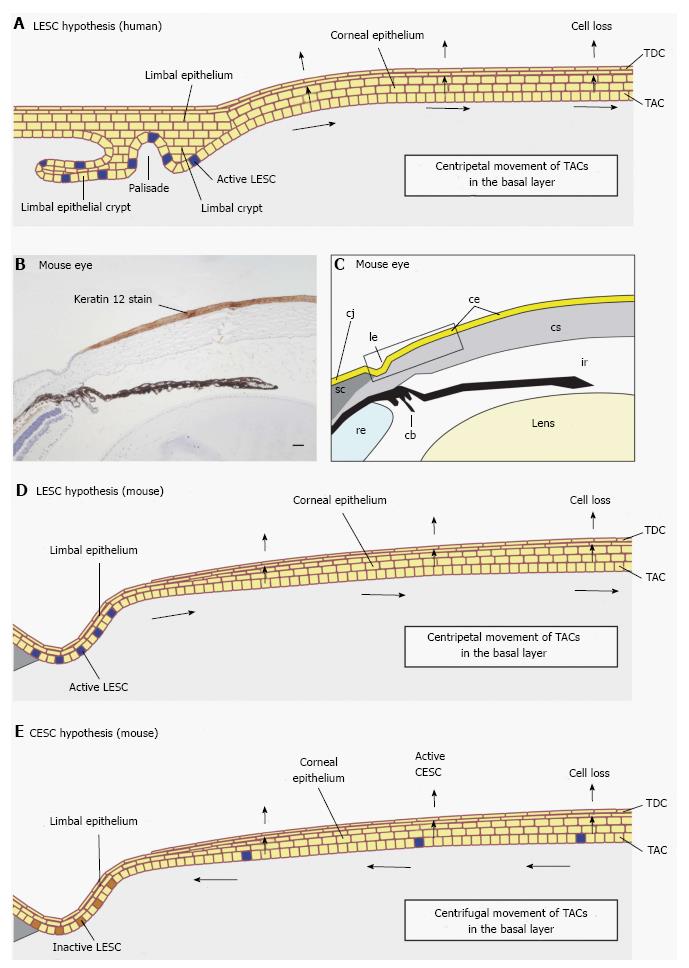Copyright
©The Author(s) 2015.
World J Stem Cells. Mar 26, 2015; 7(2): 281-299
Published online Mar 26, 2015. doi: 10.4252/wjsc.v7.i2.281
Published online Mar 26, 2015. doi: 10.4252/wjsc.v7.i2.281
Figure 3 Limbal epithelial stem cell vs corneal epithelial stem cell hypotheses.
A: Diagram of human corneal epithelial maintenance according to the limbal epithelial stem cell (LESC) hypothesis showing active LESCs in the limbal epithelium in both a limbal crypt and a limbal epithelial crypt. The LESCs divide slowly replacing themselves and producing daughter transient (or transit) amplifying cells (TACs), which divide more quickly and move centripetally from the basal layer of the limbal epithelium to the basal layer of the corneal epithelium. After a final cell division TACs leave the basal layer, move through the suprabasal layers and are shed from the surface as terminally differentiated cells (TDCs); B: Histological section showing mouse cornea, limbus and part of the conjunctiva immunohistochemically stained for keratin 12 (K12; dark brown staining) to show the border between the corneal epithelium (K12 positive) and limbal epithelium (K12 negative); C: Drawing of photograph shown in (B) with different tissues labelled. The boxed area shows part of the limbal and corneal epithelia, equivalent to that represented in (D) and (E); D: Diagram of mouse corneal epithelial maintenance according to the LESC hypothesis. The principles are the same as described for (A); E: Diagram of mouse corneal epithelial maintenance according to the corneal epithelial stem cell (CESC) hypothesis. The CESCs divide slowly replacing themselves and producing daughter TACs, which divide more quickly and move centrifugally as originally proposed[1]. After a final cell division TACs leave the basal layer, move through the suprabasal layers and are shed from the surface. cb: Ciliary body; ce: Corneal epithelium; cj: Conjunctiva; cs: Corneal stroma; ir: Iris; le: Limbal epithelium; re: Retina; sc: Sclera. Photograph (B) is reproduced from Mort et al[18] with kind permission of Springer Science + Business Media.
- Citation: West JD, Dorà NJ, Collinson JM. Evaluating alternative stem cell hypotheses for adult corneal epithelial maintenance. World J Stem Cells 2015; 7(2): 281-299
- URL: https://www.wjgnet.com/1948-0210/full/v7/i2/281.htm
- DOI: https://dx.doi.org/10.4252/wjsc.v7.i2.281









